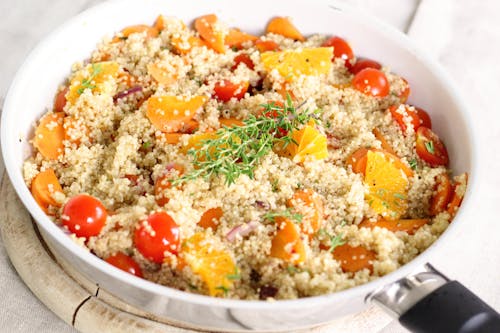Best Foods for Athletes: Fuel Like a Champion!

Best Foods for Athletes: Fuel Like a Champion!
Whether you’re training for a marathon, lifting at the gym, or just staying active everyday, nutrition is key to improving energy, endurance, and recovery.
1. Healthy Fats
Healthy fats provide long lasting energy and help to reduce inflammation in the body.
Top Picks:
-
-
-
-
Avocados-high in potassium and monosaturated fats
-
Wild Salmon-rich in anti-inflammatory omega-3 fatty acids
-
Nut butters (unsweetened almond, walnut or cashew)
-
Avocado oil-which is great for cooking and olive oil-which is great for drizzling on salads.
-
-
-
2. Smart Carbs: Your Body’s Favorite Fuel
Carbohydrates are essential for athletic performance. The key is choosing nutrient-dense, slow-digesting carbs that fuel you steadily.
Top Picks:
-
Sweet potatoes – packed with fiber and vitamins
-
Quinoa – a complete protein and excellent carbohydrate source
-
Oats – great pre-workout fuel that digests slowly
-
-
-
Bananas – quick, portable, and rich in potassium
-
-
-
3. Plant Power: Nutrient-Dense and Anti-Inflammatory
Colorful vegetables are full of antioxidants and essential minerals that help support immune function and reduce post-exercise inflammation.
Top Picks:
-
Broccoli – rich in vitamin C and fiber
-
Spinach – a good source of iron and magnesium
-
Bell peppers – high in antioxidants and vitamin C
-
Garlic and onions – natural anti-inflammatory benefits
4. Protein for Power: Build and Repair
Protein supports muscle growth and recovery after workouts. Including a variety of protein sources helps ensure you’re getting all the essential amino acids.
Top Picks:
-
Eggs – a highly bioavailable source of complete protein
-
Lean chicken or turkey breast
-
Lentils – plant-based protein with added fiber and iron
-
Protein powder – ideal for a quick and easy shake.
5. Hydration Heroes: Stay Sharp and Strong
Hydration affects every system in your body. In addition to water, many foods naturally help keep your body hydrated and balanced.
Top Picks:
-
-
-
Coconut water – natural source of electrolytes
-
Watermelon – over 90% water, plus antioxidants
-
Cucumber and celery – refreshing and low-calorie
-
Green tea or matcha – gentle caffeine and antioxidant boost
-
-
To hydrate like a pro: (click here).
Book Your Personalized Nutrition Plan
Want to optimize your athletic performance with a tailored plan?
Book your Introductory Consultation: (click here)




:max_bytes(150000):strip_icc()/GettyImages-1145581060-c6f3afa5f308461cab0a77d79a51c68a.jpg)
